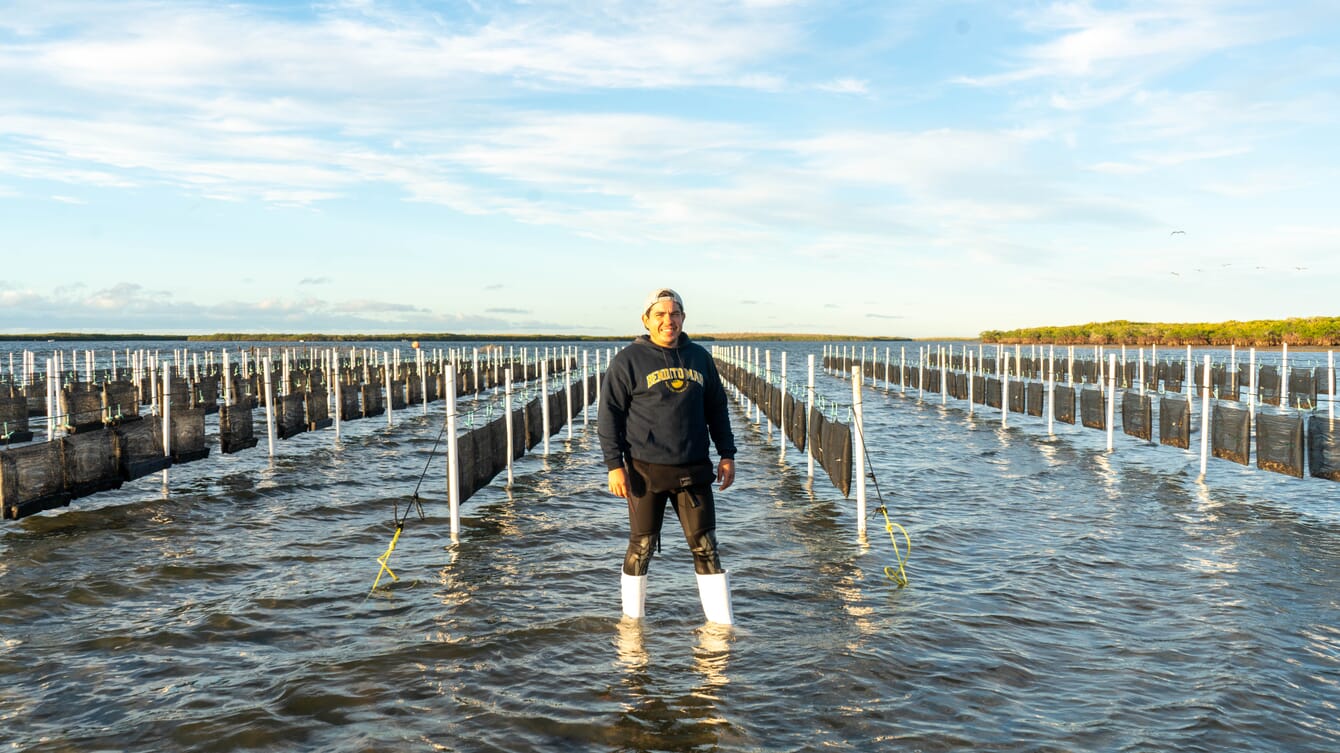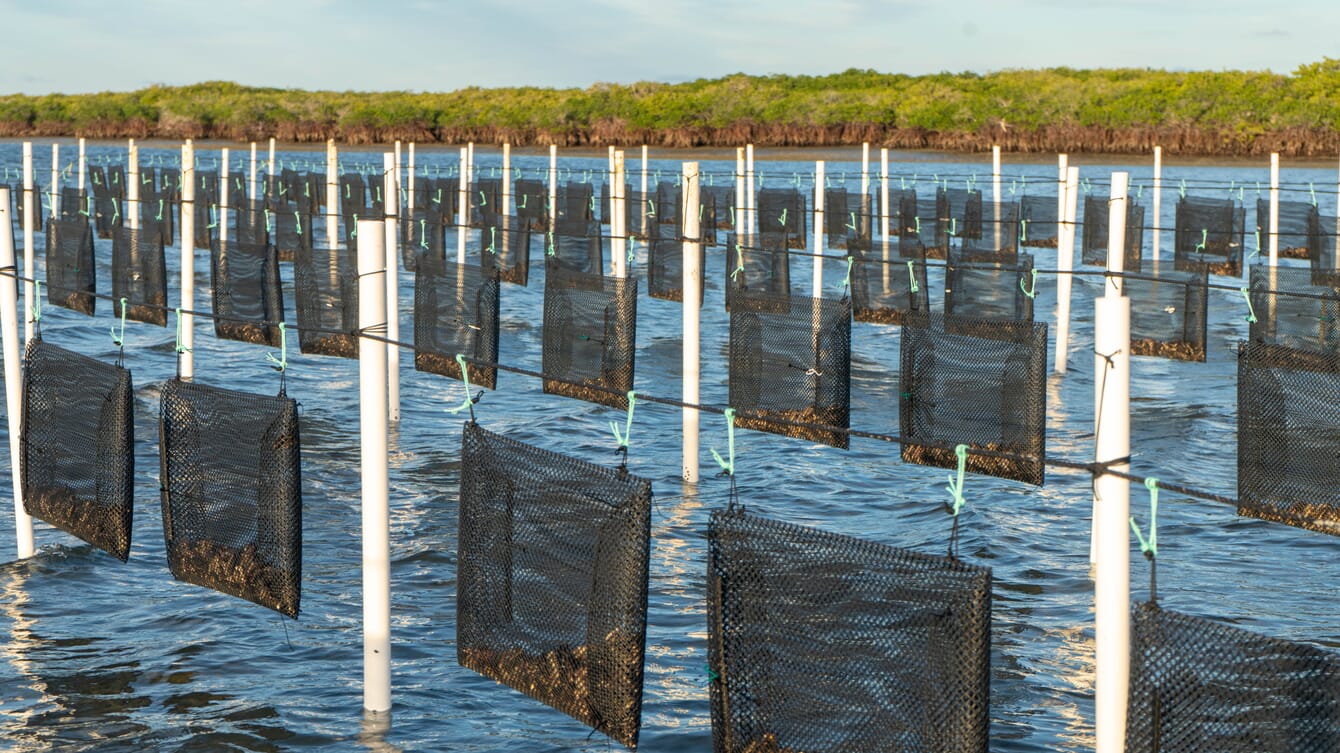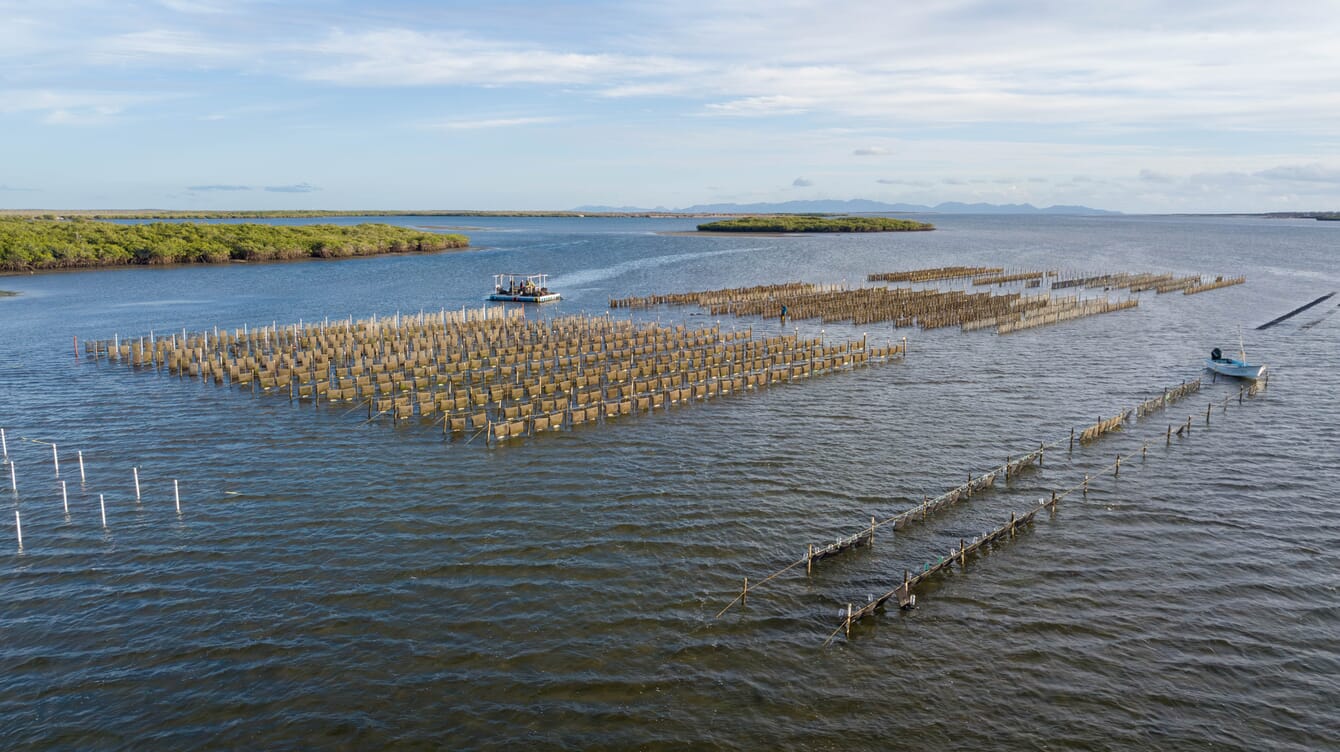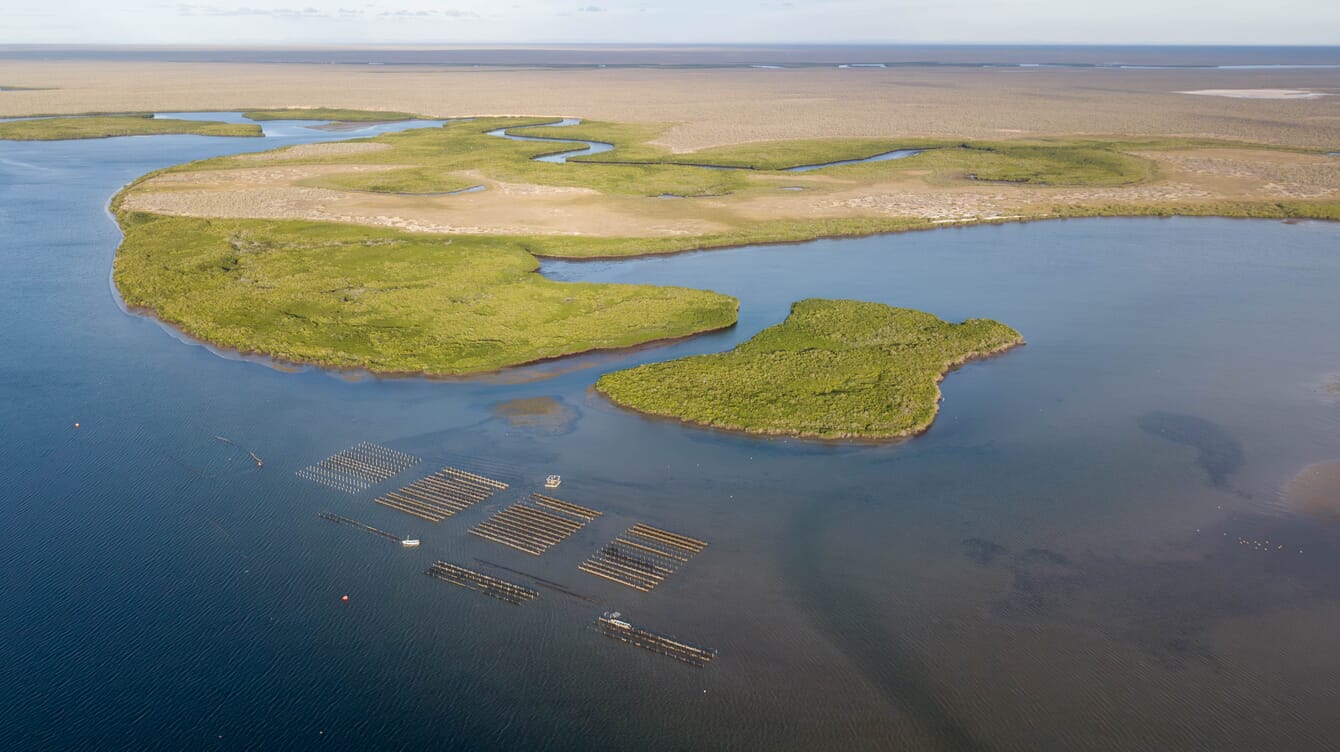
© Vicente Covarrubias
Espinoza spent his formative years on Isla Natividad, on Mexico’s Pacific Coast, a community in which fisheries co-operatives were a mainstay of the economy. It was there that his father – a marine biologist – became involved in farming sea cucumber, abalone and seaweed.
“It was normal and natural for me to talk about aquaculture and seafood products,” he reflects.
Following high school in Ensenada, Espinoza studied business administration at university and, after graduation, decided to try to combine his new-found training with his passion for ocean life and coastal communities.
“I decided to mix the two things I loved – the sea and the fair trade business. Because at that time the Chinese buyers controlled all the seafood that my dad’s company was producing. They were paying good prices but not enough. So I decided to make a business to help develop new opportunities for the fishermen in the island,” he recalls.
His first business involved the export of lobsters and geoduck clams to the Asian market, but after five years he decided he needed a change.
“I needed to do something more with my life than buying and selling, buying and selling. My dad was doing aquaculture, I was trading seafood – it made sense to start working together,” Espinoza reflects.

Bendito Mar is currently producing around 40 tonnes of oysters (around 480,000 shells) a year using the Australian method of growing in baskets on adjustable lines © Vicente Covarrubias
The end result was that they founded their own company, Bendito Mar (meaning blessed sea), with the original plan to produce sea cucumbers, abalone and seaweed. However, economic reality meant that they needed to look for alternatives that would produce swifter returns, which led them to an area 800 km further south, on the Baja California Peninsula.
“Abalone are high value, but take five years to grow. But we found small communities growing small volumes of oysters in the area and I suggested working with them in a sort of joint venture instead,” explains Espinoza.
It was, Espinoza reflects, a chance to make a difference by working with families who had been struggling to make a living from fishing.
“We initially started to work with a local family as our partners. Later, we agreed with another family that over a period of time they will stop fishing and join Bendito Mar, where they will have social security, legal benefits, and a salary proportional to what they would earn catching wild species. The difference is that, as fishermen, they did not have benefits or social security. In the next stage, we help families develop their cultivation and buy their oysters at a better price than the industry average,” he explains.
Four local families have now signed up to grow oysters for Bendito Mar and the company is currently producing around 40 tonnes of oysters (around 480,000 shells) a year, in baskets using the Australian method, on adjustable lines.
One of the key advantages of the area, according to Espinoza, is the excellent water quality, which means that the company doesn’t have to depurate their oysters prior to selling them. Meanwhile, the rich feeding in the water means that they can grow their oysters to market size in 7-8 months, although Espinoza adds that this figure is in the 12-15 month range for high end oysters.
More recently they have also diversified into growing clams and scallops and they currently harvest about a tonne of each. In terms of sales, the company is focused on the domestic and US markets, selling to dealers in Ensenada.

Espinoza believes that one of the key advantages of the area is the excellent water quality, which means they don't have to depurate their oysters prior to selling them © Vicente Covarrubias
Overcoming early hurdles
Espinoza admits that the first three years were very challenging for a number of reasons, including the impact of the Covid pandemic and the embryonic nature of the oyster farming sector in the region.
“People have been farming oysters for no more than 15 years in this area, so there aren’t many examples to follow and we have had to learn a lot by ourselves,” he explains.
But the biggest challenge he faced was the shortage of oyster spat.
“The government has tried to make people stop fishing and start farming, but we don’t have the hatcheries, the infrastructure, the packing facilities. Buying seed has been a big problem,” he reflects.
However, the arrival of a new hatchery nearby has helped to change the company’s fortunes.
“In 2021 we were only able to buy 500,000 seeds, this year we were able to buy 3 million in two months from a company called MariMex which has built a huge hatchery near La Paz and can now produce 120 million seeds a year,” Espinoza explains.
The remote location of Bentido Mar’s farms has been another obstacle.
“We don’t have much transport: there are no trains, no planes and we didn’t produce big volumes of oysters, which made transport very expensive. But now the logistics cost is decreasing as our volumes rise,” Espinoza notes.

Diversifying into hospitality with the opening of several seafood restaurants – all selling the star ingredient, oysters – has secured extra income for the company and allowed Espinoza to buy more oyster baskets and expand operations © Vicente Covarrubias
Collaboration and diversification
One of the major milestones for the company has been their decision to form a partnership with Luis Baquedano, who owned a kampachi packaging facility in La Paz and had a background in hospitality.
The duo decided to open a restaurant that specalised in farmed seafood, with oysters as the star ingredient. The Oyster House, in La Paz, proved a great success and they have since gone on to open sister restaurants in Los Cabos and Mexico City.
They decided to use their profits from the restaurants – plus a small bank loan – to build up their farming operations.
“We call it the circular economy: we produce the oysters; we pack the oysters; we send the oysters to hotels and restaurants in Cancun, Oaxaca and Mexico City, as well as our own restaurants. All that helps to grow the farm and to hire more people,” Espinoza reflects.
It will also allow them to produce the oysters more efficiently, with their first grading machine already on order, to help them meet the growing demand. It has also help Espinoza buy more baskets and expand, while a local company is now offering baskets to him on credit, which has helped to catalyse the company’s expansion.

An obstacle Espinoza faces with the remote location of his farms is the expense of transporting small volumes of oysters once they've been harvested – but, he explains, now the logistics cost is decreasing as the volumes rise © Vicente Covarrubias
While Bendito Mar may growing, it is still dwarfed by the country’s established oyster behemoths – Baja Shellfish Farm and Sol Azul – which account for 80-90 percent of the shellfish volumes, according to Espinoza.
“But I’m proud of us, because we are growing in a sustainable and regenerative way. For example when we grow scallops we harvest just 80 percent of the volume – the other 20 percent we leave to reproduce,” he explains.
Their model has been widely praised and won them first prize in a national competition for artisanal aquaculture producers in 2022. And it has also attracted the attention of The Nature Conservancy (TNC), who will be working on a project with the company next year, to analyse the impact of Bendito’s farms.
A celebration of shellfish
One of the key local initiatives that Espinoza has been responsible for is establishing Baja California Sur’s first oyster festival, the third edition of which is set to take place in May 2024.
“After the first festival many doors opened to us and I’ve been invited to speak at lots of different aquaculture shows. When I went to a World Aquaculture Society event in Merida in 2021 I met other Mexican oyster farmers. They came from different states but had the same problems as us,” he recalls.
“It made me think that I had two options: either focus on growing my own company, or use our experience to work as a team. I decided on the second option and founded AMEXO (the association of Mexican oyster producers) – a non-profit organisation to help small-scale producers do better,” he adds.
Two years after its foundation AMEXO has gained impressive momentum, helped by grants from organisations such as Builders’ Vision, the Walton Foundation and Innovaciones Alhumbra. And the momentum has helped to inspire Espinoza to dream big about how artisanal Mexican oysters can have a global, as well as local, impact.
“We want to make an oyster farming revolution. I think that in the next 10 or 20 years, Mexico will be one of the best known oyster farming countries in the world. My mission is that when you think about oysters you think about Mexico,” he concludes.




